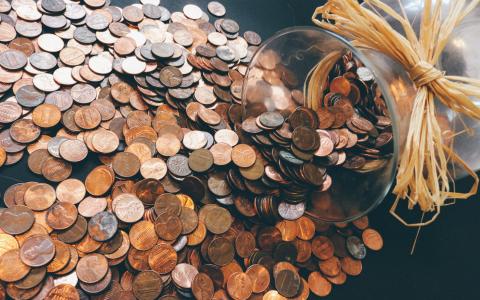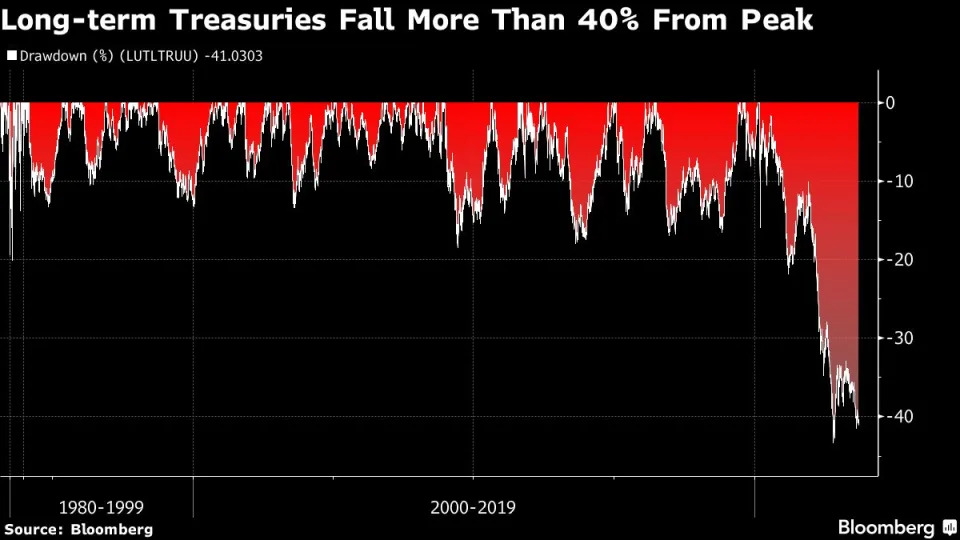
(Bloomberg) - Fifty cents on the dollar is a very low price in the world of bonds. In most cases, it signals that investors believe the seller of the debt is in such financial distress that it could default.
So when a US Treasury bond sank below that price Monday, it raised eyebrows. The security, due in May 2050, briefly touched as low as 49 29/32, marking the second time in the past two months it’s fallen below the 50-cent level.
The US, of course, is not in danger of defaulting any time soon. Treasuries are generally considered to be the safest government debt in the world. What the price does illustrate in this case is the scope of pain inflicted on investors who piled into longer-term debt at rock-bottom interest rates during the pandemic, only to then be caught off-guard when the Federal Reserve carried out the the most aggressive monetary-policy tightening in decades.
The bond due in 2050 has been hit particularly hard, given that its interest rate — 1.25% — is the lowest ever on a 30-year Treasury. Investors got over 4% on 30-year debt issued last month.
“Those bonds have below market coupons and investors need to get compensated for it,” said Nancy Davis, founder of Quadratic Capital Management.
Treasuries maturing in 10 or more years — which have the highest price sensitivity to changes in interest rates, or duration — have slumped 4% this year, following a record 29% plunge in 2022, according to data compiled by Bloomberg. That’s more than double losses across the broader Treasury market, the data show.
Yields on 30-year bonds hit an all-time low of 0.7% in March 2020, before rising to a 12-year high of 4.47% last month. They hovered 4.4% Monday.
The Treasury initially sold $22 billion of the 2050 securities at about 98 cents (it subsequently did two so-called reopenings, adding to the amount outstanding.) Since the bond’s debut, it’s rapidly lost value as newer ones were sold with higher coupons.
The Fed is the largest investor in the debt, holding about 19%, a legacy of its bond purchasing program known as quantitative easing. Other buy-and-hold investors such as exchange-traded funds, pensions and insurance companies also dominate.
Of course, should a decline in inflation fuel a slide in long-term yields, these bonds would just as quickly turn into an outsize winner versus the rest of the rates curve.
They also have at least one other attractive property for investors. Because of the deep price discount, the securities have what’s known as positive convexity, meaning they rise in price more than they fall for a given change in yield.
For instance, the bonds would surge about 11 cents should their yield decline 100 basis points. For a similar yield increase, the bonds would only fall about 9 cents.
“They have very positive convexity, and that make them very interesting bonds, although liquidity is probably very low,” said Mustafa Chowdhury, chief rates strategist at Macro Hive Ltd.
(Updates with investor comment, trading levels beginning in fifth paragraph)
By Ye Xie




